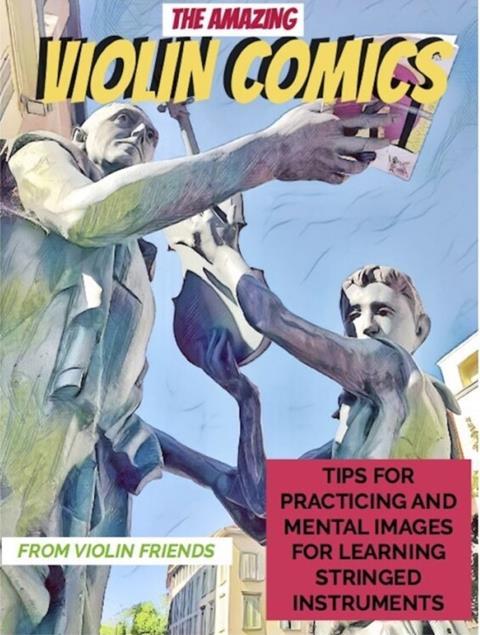Lauren Wesley-Smith examines Lauri Hämäläinen’s innovative book giving visual tips and hints on playing the violin for students

The Amazing Violin Comics: Tips for practicing and mental images for learning stringed instruments
Lauri Hämäläinen
128PP ISBN 9798367038651
Suomi Music Violin Friends Oy €42.90
Lauri Hämäläinen, author of the Violin Friends series for beginners, has put together a novel approach to learning a stringed instrument. Taking the form of a comic book, The Amazing Violin has many merits in principle: it may be a better way to reach visual learners, as opposed to notebooks full of handwritten teacher’s notes, and it promotes a healthy, holistic approach to learning the instrument. Each page contains an exercise, mostly by Hämäläinen himself but also featuring some from musicians such as Itzhak Perlman and Yehudi Menuhin, broken down into easy steps with visual guides. An index is provided to navigate the contents, which vary from stretching and bow hold exercises to bite-sized music history and how to open the violin case.
As much as I admire the ethos of this book, however, it is in undeniable need of revision. More than the occasional typo, the problem is that it’s visually overwhelming. Rather than choosing drawings or true photographs, Hämäläinen has opted for heavily edited photos with an uncanny-valley effect. Sometimes cartoonish and at other times utterly washed out, the art is inconsistent across the book. Most of the images also have distracting backgrounds from wherever Hämäläinen happened to be standing, making the subject hard to distinguish in the haze of the sepia filter, and competing with the brightly coloured stickers on almost every panel.
Read: The Suzuki method: A visionary with a violin
Read: Teaching a stringed instrument you have never played before
Read: 5 ways to engage teenage string students in learning and performing a piece of music
The layout can be confusing at times, sometimes requiring reading from left to right, then right to left within the same page. What is also lacking is an explanation of why each exercise is important and when it should be done. If this could have been added on a plainer page, it might give the reader’s eyes a much-needed break. Comic Sans may be a dyslexia-friendly font but, with overwhelming visuals on every page, this is not an easy read.
I could see this book becoming a great asset to a music teacher’s toolbox, as a way of sending the student home with a visual guide to recreate an exercise covered in the lesson. As it stands, however, the presentation distracts from what is genuinely good content.
LAUREN WESLEY-SMITH











































No comments yet